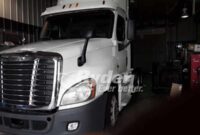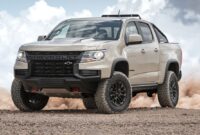80s Toyota Trucks For Sale: The Enduring Legacy of Unbreakable Icons sale.truckstrend.com
In an era defined by shoulder pads, synth-pop, and groundbreaking cinematic adventures, a different kind of icon was quietly forging its legend on roads less traveled: the 80s Toyota Truck. More than just utilitarian vehicles, these machines became synonymous with unwavering reliability, rugged capability, and a simplistic charm that continues to captivate enthusiasts decades later. From the scorching deserts of the Baja 1000 to the icy peaks of the Andes, these trucks proved their mettle, earning a reputation as virtually indestructible workhorses. Today, the search for an 80s Toyota Truck for sale isn’t just about finding a vehicle; it’s about acquiring a piece of automotive history, a testament to Japanese engineering prowess, and a ticket to a burgeoning community of dedicated owners.
This comprehensive guide will delve into the world of 80s Toyota Trucks, exploring their enduring appeal, what makes them so special, and how to navigate the market to find your own piece of this legendary legacy.
80s Toyota Trucks For Sale: The Enduring Legacy of Unbreakable Icons
The Enduring Appeal: Why 80s Toyota Trucks Still Rule
The allure of 80s Toyota Trucks, primarily the Pickup (known as Hilux globally) and the first-generation 4Runner, is multifaceted, rooted deeply in their design philosophy and real-world performance.
- Legendary Reliability: At the heart of their reputation is the virtually indestructible 22R and 22RE (fuel-injected) four-cylinder engines. These motors are renowned for their longevity, often reaching 300,000 to 500,000 miles with basic maintenance. Their mechanical simplicity means fewer complex systems to fail, making them incredibly dependable.
- Robust Drivetrains: Whether equipped with the early 80s solid front axle or the later independent front suspension (IFS), these trucks boasted stout manual transmissions and rugged transfer cases. The 4×4 systems were straightforward and highly effective, providing excellent off-road traction.
- Simplicity & Maintainability: Unlike modern vehicles laden with intricate electronics, 80s Toyotas are refreshingly analog. This simplicity translates to easier diagnosis and repair for the DIY mechanic, and lower labor costs for professional shops. Parts, especially for mechanical components, are surprisingly plentiful.
- Off-Road Prowess: Their compact size, excellent approach and departure angles, and durable construction made them natural off-road champions. Early models with solid front axles are particularly prized by rock crawlers and serious off-roaders for their articulation and strength.
- Timeless Design: The clean lines, utilitarian aesthetic, and distinctive front grilles of these trucks have aged gracefully. They possess a classic, no-nonsense appeal that stands out in a sea of increasingly complex modern designs.
- Pop Culture Influence: The iconic black 1985 Toyota XtraCab 4×4 Pickup driven by Marty McFly in Back to the Future cemented its place in pop culture, significantly boosting its desirability and contributing to its classic status.

Key Models and Generations of the 80s Toyota Trucks
To understand the market, it’s crucial to know the different iterations available during the 1980s.
-
Third Generation Pickup (1979-1983): The Solid Axle Era
These models are highly coveted, especially the 4×4 variants, due to their solid front axle (SFA) setup. This design offers superior strength, articulation, and ease of modification for extreme off-road use compared to later independent front suspension (IFS) designs. They typically came with the 20R or 22R carbureted engines. Single cab, short bed, and long bed options were available. These are often the most expensive and sought-after for serious off-road builds or purists. 
Fourth Generation Pickup (1984-1988): The Introduction of IFS and EFI
The 1984 model year marked a significant shift with the introduction of Independent Front Suspension (IFS) on 4×4 models, aiming for a more comfortable on-road ride. This generation also saw the introduction of the 22RE (electronic fuel injection) engine in 1985, offering improved fuel efficiency and cold-weather starting. The XtraCab (extended cab) option became popular, providing more interior space. While not as universally beloved by hardcore off-roaders as the SFA models, the IFS trucks are still incredibly capable and offer a smoother daily driving experience.-
First Generation 4Runner (1984-1989): The Original SUV
Launched in 1984, the 4Runner essentially took the Pickup chassis and added an integrated rear shell with a removable fiberglass top over the bed area, creating a true SUV. It quickly became a sensation, offering the ruggedness of a truck with the enclosed space of an SUV. Early 4Runners (1984-1985) retained the solid front axle on 4×4 models, making them extremely desirable. From 1986 onwards, the 4Runner adopted IFS. The 4Runner often commands higher prices than the Pickup due to its versatility and unique styling.

What to Look For When Buying an 80s Toyota Truck
Purchasing a vehicle from the 1980s requires a careful eye. Here’s a checklist of critical areas to inspect:
- Rust: This is the primary enemy. Check the frame thoroughly, especially near suspension mounts, body mounts, and the rear leaf spring hangers. Inspect cab corners, rocker panels, wheel wells, bed floor, and tailgate. Look under floor mats for floor pan rust. Southern and Western US trucks tend to have less rust.
- Engine (22R/22RE): Listen for knocking, excessive smoke (blue/black), or unusual noises. Check for oil leaks around the valve cover, front timing cover, and oil pan. A common issue is the timing chain rubbing through the timing cover, leading to a coolant/oil mix. Check coolant for signs of oil, and oil for signs of coolant (milky). The 22RE is generally more reliable and powerful.
- Transmission and Drivetrain: Test all gears, including reverse, for smooth engagement. Listen for grinding or whining noises. Engage 4×4 (high and low range) and ensure it works properly. Check for play in U-joints and listen for differential noises.
- Suspension and Steering: Inspect bushings, ball joints (especially on IFS models), tie rod ends, and shock absorbers. For IFS trucks, check the idler arm and pitman arm for excessive play, which can lead to vague steering.
- Brakes: Check for spongy pedal feel, pulling to one side, or excessive noise.
- Electrical System: Test all lights, gauges, wipers, horn, and power windows (if equipped). The wiring is relatively simple, but age can cause issues.
- Interior: Look for cracked dashboards (very common), torn seats, and missing trim. While aesthetics can be fixed, they indicate overall care.
- Modifications: Assess any aftermarket lifts, engine swaps, or body modifications. Poorly executed mods can lead to more problems than benefits. Look for quality components and professional installation.
- Paperwork: Ensure the title is clear and matches the VIN on the vehicle. Ask for service records if available.
Where to Find Your Dream 80s Toyota Truck
The hunt for an 80s Toyota can be a rewarding journey.
- Online Marketplaces: Craigslist, Facebook Marketplace, and eBay Motors are primary sources. Use broad search terms and be prepared to travel.
- Specialized Forums & Groups: Websites like IH8MUD.com (International Harvester, but a huge Toyota presence) and dedicated Facebook groups for 80s Toyota Pickups and 4Runners are excellent resources. Owners often list their vehicles there first.
- Auction Sites: For high-end, meticulously restored, or low-mileage examples, sites like Bring a Trailer are worth monitoring. Be prepared for premium prices.
- Local Searches: Sometimes, the best finds are through word-of-mouth or spotting a "for sale" sign. Check local classifieds.
- Rust-Free Zones: Consider looking in drier climates like the Southwest (Arizona, New Mexico, California) or parts of the Pacific Northwest, as these areas typically yield trucks with less rust.
Owning and Maintaining Your Classic Toyota
Owning an 80s Toyota Truck is less about "maintenance" and more about "stewardship." These trucks respond well to regular care.
- Parts Availability: Mechanical parts (engine components, drivetrain, suspension) are generally easy to find, often from aftermarket suppliers or even new old stock (NOS). Body panels can be trickier, but reproduction parts are becoming more common.
- Common Issues & Solutions:
- 22RE Head Gasket: A known weak point, especially if the engine overheats. Replace with a multi-layer steel (MLS) gasket for durability. Ensure the cooling system (radiator, thermostat, water pump) is in top shape.
- Timing Chain Guide Wear: The plastic timing chain guides can wear, causing a rattle. Replace with metal guides for a permanent fix.
- Rust: Ongoing battle in wetter climates. Prevention is key: wash regularly, apply rust inhibitors, and address small spots before they grow.
- Carburetor Issues (22R): Can be finicky with age. Rebuilding is an option, or consider a Weber aftermarket carburetor for simplicity.
- Steering Play (IFS): Worn idler arms are common. Replace with heavy-duty aftermarket versions.
- Community Support: The online community for these trucks is immense and incredibly helpful. You’ll find countless DIY guides, troubleshooting tips, and parts recommendations.
- Insurance: Consider classic car insurance, which often offers better rates and agreed-upon value coverage for vintage vehicles.
The Investment Aspect and Future Value
80s Toyota Trucks are more than just old vehicles; they are becoming legitimate collector’s items. Well-maintained, unmolested examples, particularly solid-axle 4×4 Pickups and first-gen 4Runners, have seen significant appreciation in value over the past decade. The "Back to the Future" fame, coupled with their inherent durability, ensures continued demand. While not a guaranteed financial investment, buying a good example and maintaining it well means you’re unlikely to lose money, and could even see a healthy return.
Estimated Price Guide for 80s Toyota Trucks (Pickup & 4Runner)
Please note that these are estimated price ranges in USD and can vary significantly based on location, specific year, mileage, 2WD/4WD, engine type, modifications, and immediate market demand.
| Model/Year Range | Condition Category | Estimated Price Range (USD) | Key Characteristics |
|---|---|---|---|
| Pickup (3rd Gen: 1979-1983) | Project/Parts | $1,500 – $5,000 | Significant rust, non-running, major mechanical issues |
| (Solid Front Axle) | Fair Driver | $5,000 – $12,000 | Runs/drives, needs repairs, moderate rust, rough interior |
| Good Driver | $12,000 – $25,000 | Solid mechanicals, minor cosmetic flaws, minimal rust | |
| Excellent/Restored | $25,000 – $45,000+ | Meticulously maintained, rust-free, professional restoration | |
| Pickup (4th Gen: 1984-1988) | Project/Parts | $1,000 – $4,000 | Significant rust, non-running, major mechanical issues |
| (IFS, 22R/22RE) | Fair Driver | $4,000 – $10,000 | Runs/drives, needs repairs, moderate rust, rough interior |
| Good Driver | $10,000 – $20,000 | Solid mechanicals, minor cosmetic flaws, minimal rust | |
| Excellent/Restored | $20,000 – $35,000+ | Meticulously maintained, rust-free, professional restoration | |
| 4Runner (1st Gen: 1984-1989) | Project/Parts | $2,000 – $6,000 | Significant rust, non-running, major mechanical issues |
| (Solid Axle & IFS, 22R/22RE) | Fair Driver | $6,000 – $15,000 | Runs/drives, needs repairs, moderate rust, rough interior |
| Good Driver | $15,000 – $30,000 | Solid mechanicals, minor cosmetic flaws, minimal rust | |
| Excellent/Restored | $30,000 – $60,000+ | Meticulously maintained, rust-free, professional restoration, especially 1984-85 SFA models |
Frequently Asked Questions (FAQ) about 80s Toyota Trucks
Q: Are 80s Toyota Trucks truly as reliable as people say?
A: Yes, their reputation for reliability is well-earned. The 22R/22RE engines and robust drivetrains are known to last for hundreds of thousands of miles with proper maintenance.
Q: What’s the main difference between the 22R and 22RE engines?
A: The 22R is carbureted, while the 22RE is electronically fuel-injected. The 22RE offers better fuel economy, easier cold starts, and more consistent performance.
Q: Is a solid front axle (SFA) or independent front suspension (IFS) better for off-roading?
A: For extreme off-roading and rock crawling, the solid front axle (found on 1979-1983 Pickups and 1984-1985 4Runners) is generally preferred due to its greater articulation, strength, and ease of lift. IFS provides a smoother ride on pavement and light trails.
Q: Are parts hard to find for these older trucks?
A: Mechanical parts are generally readily available from aftermarket suppliers. Body panels and specific interior trim pieces can be harder to source, but the strong owner community often shares resources for finding rare parts.
Q: Can an 80s Toyota Truck be a daily driver?
A: Absolutely! Many owners use them as daily drivers. With proper maintenance and addressing common wear items, they are perfectly capable and enjoyable for everyday use.
Q: What’s the "Back to the Future" truck, and how does it affect prices?
A: The truck is a black 1985 Toyota XtraCab 4×4 Pickup. Its iconic status in the movie has significantly driven up demand and prices for well-preserved examples of this specific year and configuration.
Q: Should I buy a restored truck or a project?
A: It depends on your budget, skills, and time. A restored truck will cost more upfront but be ready to drive. A project will be cheaper to buy but requires significant time, effort, and potentially more money to bring it to a good condition.
Conclusion
The appeal of 80s Toyota Trucks for sale extends far beyond mere transportation; it’s a testament to a golden age of automotive engineering where simplicity, durability, and capability reigned supreme. These trucks aren’t just vehicles; they are a lifestyle, a hobby, and for many, a cherished part of their identity. Whether you’re a seasoned off-roader, a classic car enthusiast, or simply someone seeking a reliable and characterful ride, an 80s Toyota Truck offers an unparalleled blend of rugged charm and proven dependability.
Embarking on the journey to find and own one of these legendary machines is an investment not just in a vehicle, but in a piece of history that continues to prove its worth, one mile at a time. The open road awaits, and with an 80s Toyota Truck, you’ll be ready for any adventure it throws your way.




